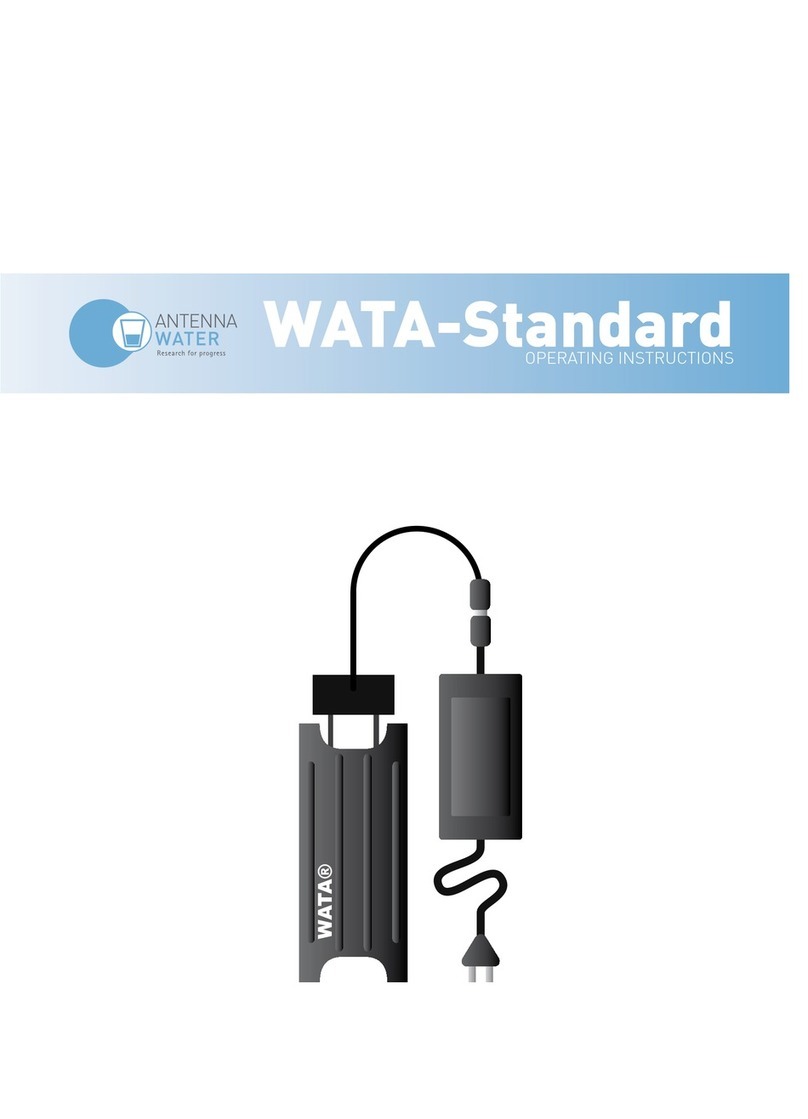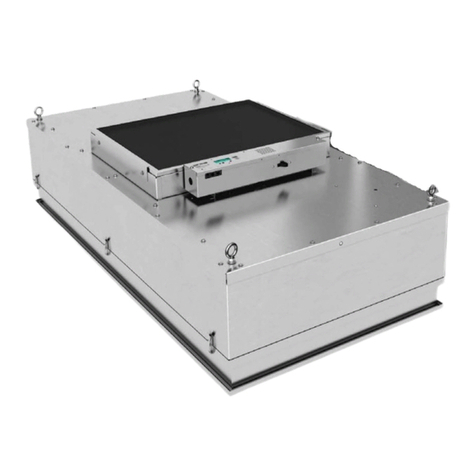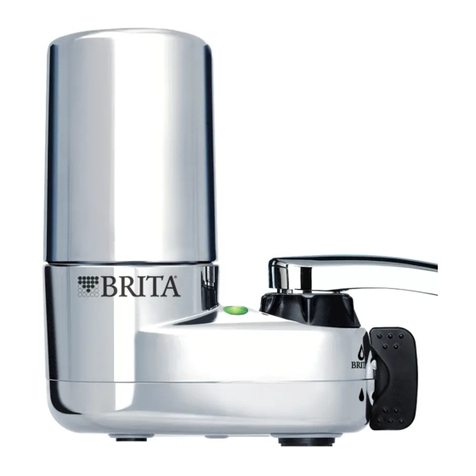JUSTCHLOR J100SC User manual

JUSTCHLOR OWNERS HANDBOOK Page 1 of 16
Created by: Product Management – Just Range of Products – Jasco Trading (Pty) Ltd

JUSTCHLOR OWNERS HANDBOOK Page 2 of 16
Created by: Product Management – Just Range of Products – Jasco Trading (Pty) Ltd
JUSTCHLOR®OWNERS MANUAL
PREAMBLE
Congratulations of selecting JustChlor as you Salt Water chlorinator of choice. You have
made a wise Leisure Time Investment. We trust that you will have years of hassle-free
pleasure in and around your swimming pool.
For us to ensure that you maximize your investment, we suggest that you, the Pool Owner
take special note of the following. This is very important and applies to the Installer, albeit
the Pool Builder/Pool Serviceman or the DIY person and is of equal importance to you as the
Pool Owner.
RULE # 1:
A chlorinator is an Appliance like any other Appliance within your household. It has to be
treated and cared for as you would you washing machine, tumble drier, fridge, etc, they all
have a specific function and run off electricity, JUST like ours!.
Constant care for the unit and its surrounding environment must be maintained at all times.
Spiders, frogs, lizards, ants, cockroaches, etc don’t enter you household appliances, ...... why
should ours?
Your washing machine operates with water, but it don’t operate under water! .......... neither
does ours.
Ventilation and care for the ambient environment is a prerequisite for your other appliances
effective operation... so does ours.
You wouldn’t install or leave one of these appliances out in the open exposed to the elements
without some form of protection...... we’re no different.
Physical abuse or neglect to household Appliances, in any way or form, voids the
manufacturers Warranty.... so does ours.
Infringement of any of these operating conditions violates the manufactures Warranty........ so
does ours.
Now that Rule # 1 is out of the way, let’s look at the following:
1. Installation Instructions
If you do not maintain your water chemistry from the outset, you could experience difficulties
with water clarity and blame the salt water chlorinator.
FACT:
¾Your salt water chlorinator will only produce “Chlorine” and this “Chlorine” will only
work if all the basic chemical balance and mechanical systems are in check.
¾pH, Total Alkalinity (TA), Stabiliser (Cyanuric Acid) and Salt content (TDS) will
determine how well the chlorine produced will sanitises your pool water.
2. Mounting of Power Pack
The Power Pack is an electrical device, which must be treated like any other electrical
devise/appliance and must be mounted above ground level under some form of element
protection (Lean-To, under the eave of roof, in a pool pump/filter box/housing, etc)
2.1. A universal mounting bracket has been supplied however due to the many varied
situations out there we cannot supply all means of mounting supports.
2.2. The Power Pack must be located so that the Cell Power lead will not be “stretched”
in between the cell and the power pack.

JUSTCHLOR OWNERS HANDBOOK Page 3 of 16
Created by: Product Management – Just Range of Products – Jasco Trading (Pty) Ltd
2.3. Mount the Power Pack so that it will be accessible and visible for easy maintenance
and ensure that the meter is in the vertical position. Should it be necessary to mount
the Power Pack outside the Pump/filter box, then, it must be protected from the
elements especially Rain and the Garden Irrigation System.Your warrantee will
lapse in the event of water damage.
2.4. The power pack generates heat and must be afforded the opportunity to breathe.
The underside of the unit is well ventilated and must not be obstructed, neither
should the side vents.
3. Installing the Electrolytic Cell
3.1. The Element Assembly (Electrode and Housing), must be the last item in the water
return line (after the pool heating system if so equipped) and must be installed
vertically. Do not let anyone tell you otherwise. Refer to Diagram 1 below.
3.2. When selecting your position, bear in mind, accessibility and maintainability. (i.e.
Ease of extraction of the cell for maintenance). In cases where the system is below
water level - ensure that a non-return valve is installed between the cell housing and
the return to the pool. If neglected - flooding of the cell/pump area and drainage of
the pool will ensue once maintenance of the cell is attempted.
3.3. It is advised that you use universal unions to couple the electrode housing into the
pipe work and multi-port valve, This allows you to, to repair or replace the multi-port
valve, with ease and without the need to “cut” into the plumbing, should the need
arise.
3.4. The element itself is then screwed into positioned within the casing, requiring
approximately 1.7 turns to seal it in position.
3.5. The cables that connect the element to the power pack should not need to be
disconnected for any reason whatsoever, there is a high current passing through
these connections and interference with the connections fitment can result in the
system malfunctioning.
Diagram 1
4. Electrical Connection
4.1. Ensure the Pool pump and JustChlor®Power Pack is connected to the same power
source i.e. The Pool Pump Timer (especially the self cleaning models).

JUSTCHLOR OWNERS HANDBOOK Page 4 of 16
Created by: Product Management – Just Range of Products – Jasco Trading (Pty) Ltd
4.2. Should you not have a fully operational timer with multiple setting options, then you
will experience difficulties. We recommend that you upgrade to a newer generation
timer.
4.3. Ensure that the current carrying capacity of the circuit breaker feeding the pump, and
now the chlorinator system, is sufficient to carry the additional load.
NOTE: The J200 models require that you upgrade the main circuit breaker which controls the
pump to a 15 amp unit if not so already done. This model has a higher inrush current than its
smaller brother the J100 model.
5. Handing Over to Your Customer
5.1. It is essential that the customer be handed the Owners Manual. It is recommended
that the Customer should sign receipt thereof; this can come back and bite you at
some time in the future if you don’t.
5.2. Fill out the Warranty registration form at the back of the Owners Handbook,
5.2.1. make a copy for customer retention and
5.2.2. send the original off to the address provided on the Warranty registration
form.
5.2.3. Failure to do so will null-en-void the customers Warranty.
5.3. Instruct the Customer on how to operate and maintain the Chlorinator as well as the
water chemistry, also explain the operation of the system, especially;
5.3.1. Power Pack operation and the meter/selector switch relationship.
5.3.2. Electrode maintenance - all models.
5.3.3. Timer settings, especially on the low maintenance self cleaning (SC) models.
5.3.4. Salt Test procedure, when and how to add salt.
5.3.5. Bucket test procedure
5.3.6. Procedures for fault resolution (who do they call if there is a problem)
5.4. Leave the Chlorinator switched off for 24 hours whilst the salt is dissolving. The
pump may be left to run as normal, or until such time as all the salt has dissolved
and has had sufficient time to mix properly with the pool water.
5.5. Ensure that the customer knows to switch it ON after this period has elapsed.
5.6. If you are the contracted installer, contact the customer as a courtesy call to ensure
that the customer has complied with the instructions issued by you.
6. Water Chemistry
6.1. Ensure the Pool Filter is clean. Open inspection of the filter is advised.
6.2. The water must be free of metals and algae, especially, copper and iron. This must
be tested for - Do not make assumptions!
6.3. Super-chlorinate the pool with liquid or granular chlorine too 3ppm free available
chlorine (DPD test method only).
6.4. Ensure minimum salt level 0.6% (6000ppm) by adding minimum 60 kg IODENE
FREE salt per 10 000 litres water. Too little salt will result in premature element
failure and the voiding of the Warranty; ensure that your salt calculation versus pool
size is correct - rather more salt than too little.
6.5. Explain the effects of Over Salt on operation and how to overcome this. Adjust
output selector down, ensuring output meter is below 100% of output, or replenish
with freshwater makeup.
6.6. Ensure Pool is stabilized with Stabiliser (ISO Cyanuric Acid) to 60ppm. Over-
stabilization with Cyanuric Acid could cause sanitizer to become ineffective. Consult
your local pool shop for remedy.
6.7. Calcium hardness is within tolerances. 80 – 140ppm (~ 110ppm)
6.8. COMPATIBLE CHEMICALS - With the chlorinator installed, you should not need
supplementary other chemicals, other than granular chlorine to maintain your pools if
you have complied with the above.
7. Adding Chemicals

JUSTCHLOR OWNERS HANDBOOK Page 5 of 16
Created by: Product Management – Just Range of Products – Jasco Trading (Pty) Ltd
After the initial dosing of salt and Stabiliser, top up quantities should only be required when
the pool water is diluted with fresh water. This will only occur after rain, or additions of water
by the pool owner. Test your pool water for salt and Stabiliser (ISO Cyanuric Acid) levels
before adding these two chemicals.
Other chemicals should be added as indicated by pool chemical test. Pool chemical status
should be checked at least once a week during summer months. All chemicals should be
added in small quantities, checking the chemical change after each addition. Following this
procedure saves using excess chemicals and the problems associated with correcting such
errors.
If you suspect JustChlor®chlorinator is not making chlorine, this can easily be checked:-
•Whilst the pump is running and the chlorinator is turned on, using your pool test kit,
•Take a water sample close to the water return nozzle/aimflow.
•The sample should be taken by placing your thumb over the sample tube, placing the
sample tube in the return stream, and removing your thumb to ensure that you are
testing water coming from the chlorinator.
•Take a chlorine reading, the reading should be >1.5ppm. If the reading is too high (~
3ppm) adjust the Output Selector Switch down to the next level.
•Take another chlorine reading the following day, approximately the same time of day,
adjust the Output Selector Switch either up or down to accommodate the new reading
•Recommended levels should be between 1.0ppm – 3ppm, depending on your pools
specific chlorine demand.
8. Stabiliser (Cyanuric Acid 40 - 60ppm)
The chlorine gas produced by the chlorinator needs protection from the ultra violet rays of the
sun. In the absence of Stabiliser, the chlorine produced will be rapidly dissipated into the
atmosphere, giving the impression of zero chlorine reading in the water. Adding the right
amount of stabiliser will enhance the effectiveness of your pool sanitizer.
Stabiliser effectively prolongs the active life of the produced chlorine, allowing sanitization to
take place.
9. pH
The pH is an important part of water chemistry. The effectiveness of the Sanitiser you are
using depends largely on the pH of your swimming pool water. However, the TOTAL
ALKALINTY of your pool plays a large part in how stable the pH will be. It is a known industry
fact that Total Alkalinity keeps the pH from fluctuating high or low; commonly know as
“bounce”. We advise that this be researched on the internet as this is YOUR LEISURE TIME
INVESTMENT?
To maintain the pH of your pool water,
•Use the standard pool test kit described earlier.
•Read the instructions on how to perform this test, it is simple and should not be
rushed, rather if need be perform a second test to verify the first tests results.
•After completing the test follow up with the “Acid demand test”.
•Referring to the tables supplied with the test kit you will be guided to the
approximate amount of hydrochloric acid needed to correct the pH of the water.
•Repeat this test every 24 hours until the desired pH has been reached.
•Should the pH be too low for the type of pool you have, use “Soda ash” to raise pH
reading in Marbleize pools and “alkalinity increase” in Fiberglass pools?
•Note: that when filling the pool for the first time and the salt is being added, salt is an
alkaline and will raise the pH level of the water, therefore a fair amount of acid may
be added initially to bring the pH down in the 7,2 – 7,4 window.
TIP: When adding acid to your pool, it is imperative to dilute the acid in a bucket half filled
with pool water then you pour the diluted mixture into the pool.
10. Water Chemistry Summary
Popular Water Filtration System manuals by other brands
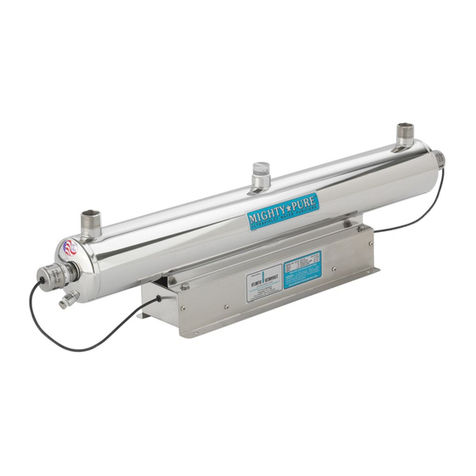
Atlantic Ultraviolet
Atlantic Ultraviolet Mighty Pure MP16A owner's manual
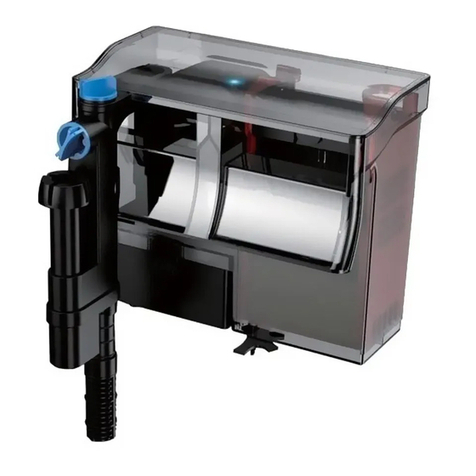
SunSun
SunSun CBG-500 Operation manual
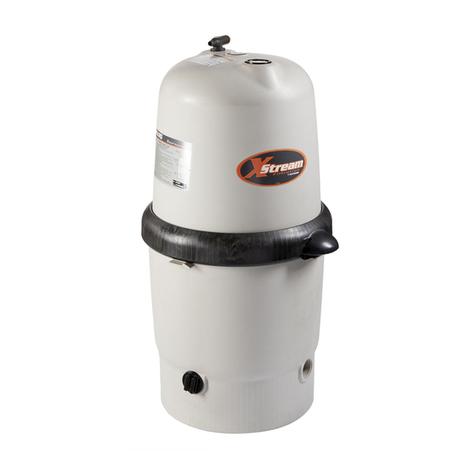
Hayward
Hayward XStream Filtration Series owner's manual
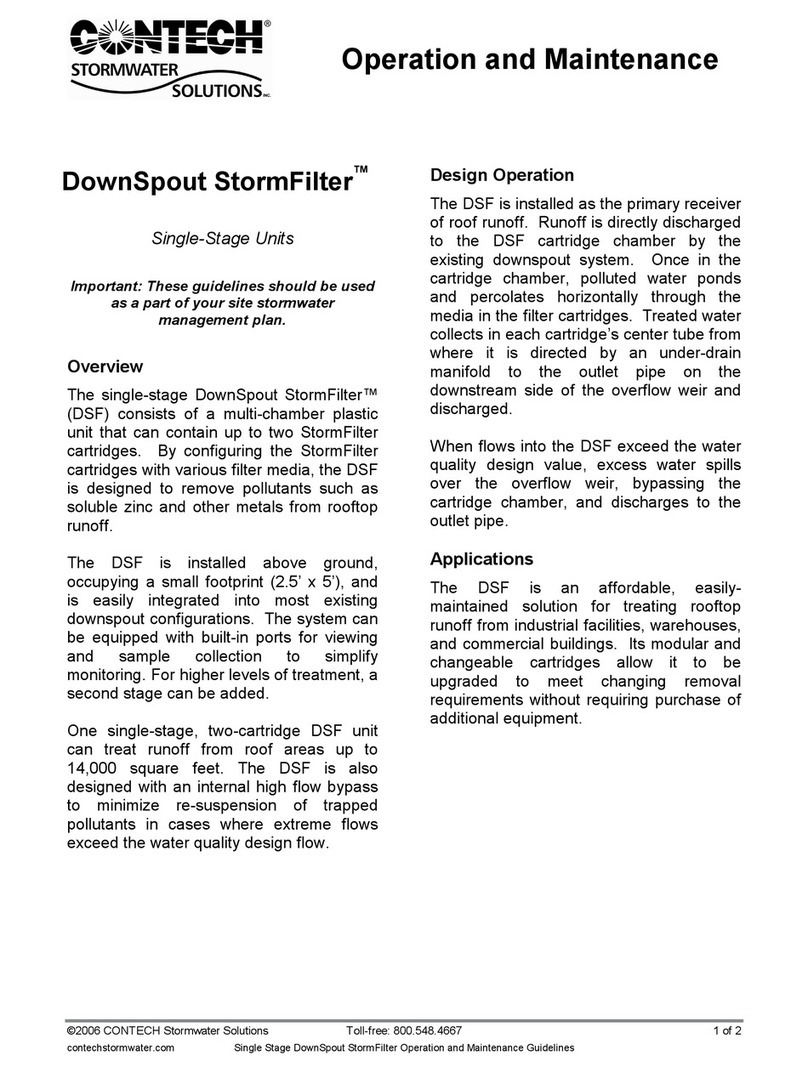
Contech
Contech DownSpout StormFilter Operation and maintenance

Teka
Teka Airfilter MINI operating instructions
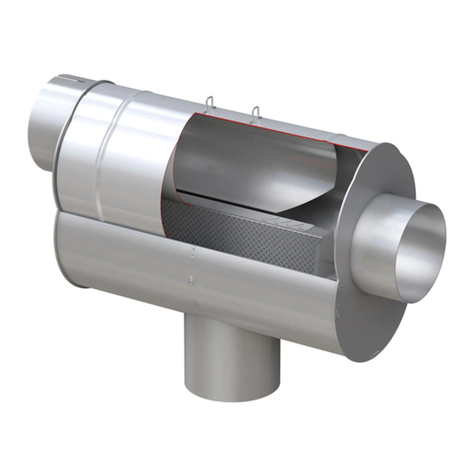
Wisy
Wisy LineAir 100 Installation and operating instructions
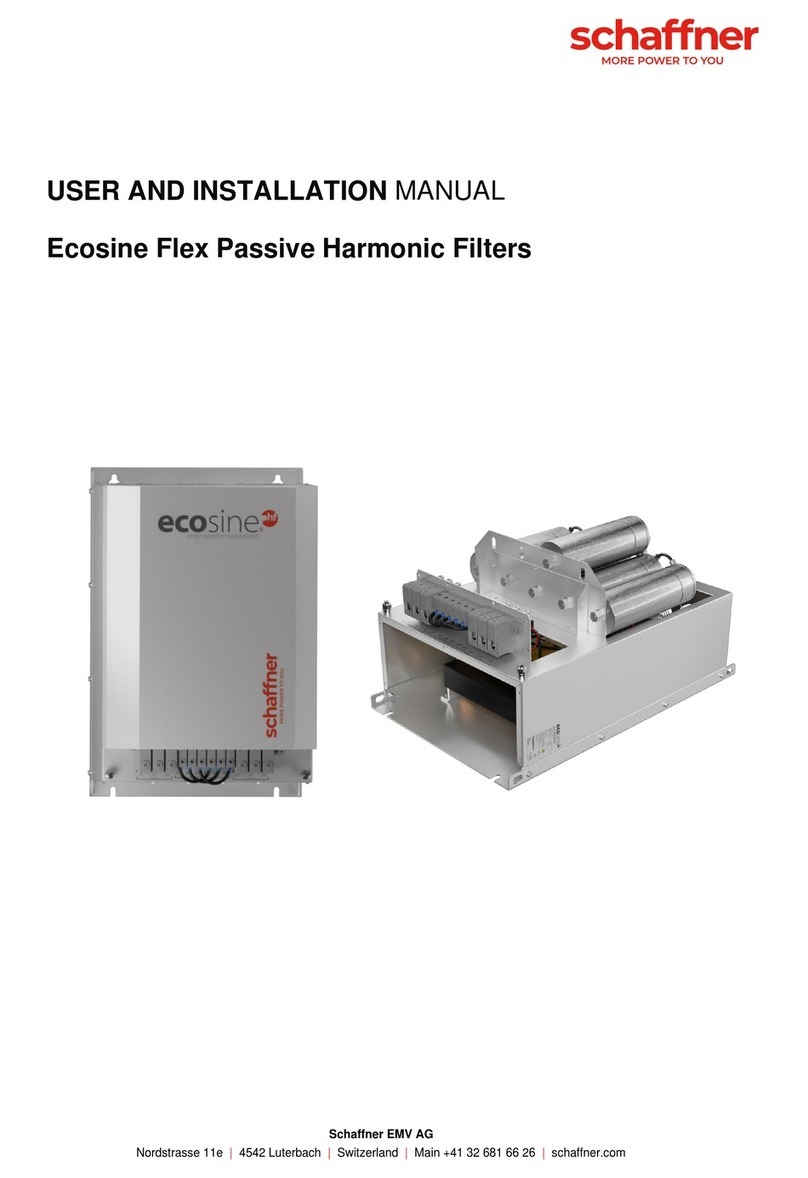
Schaffner
Schaffner Ecosine FN3446 Series User and installation manual
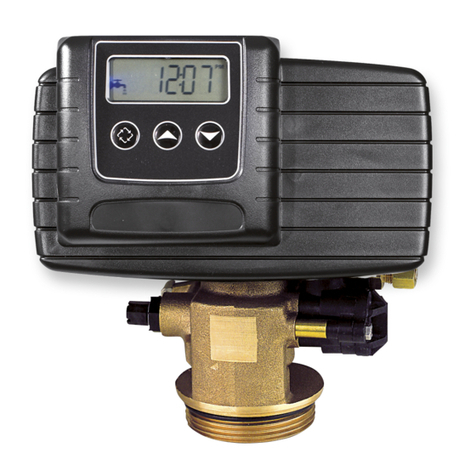
Pentair
Pentair FLECK 4600 SXT Installer manual

H2O International
H2O International H20-500 product manual

Renkforce
Renkforce 2306241 operating instructions
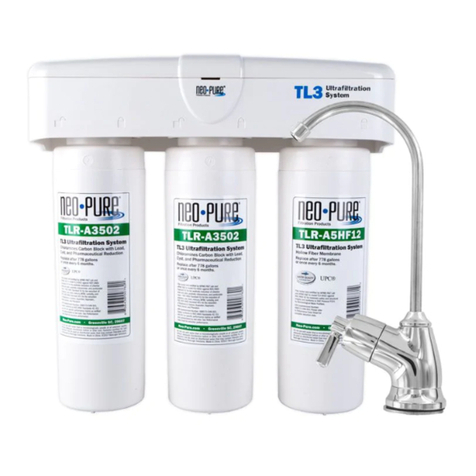
Neo-Pure
Neo-Pure TL3-A502 manual
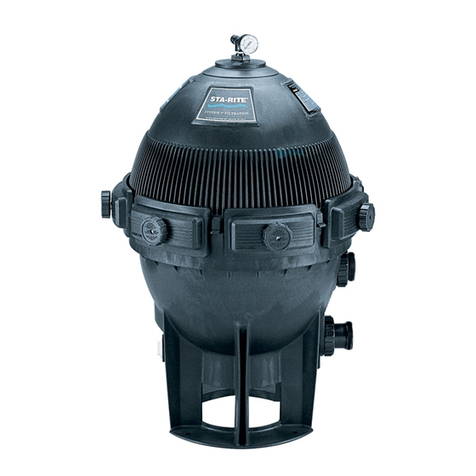
STA-RITE
STA-RITE VERTICAL GRID DE FILTERS S7D75 owner's manual


